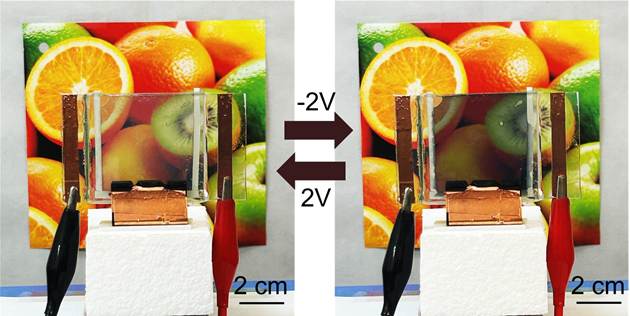Ministry of Science & Technology
Bengaluru scientists develop cost-effective smart windows
Posted On:
29 JUL 2025 3:44PM by PIB Delhi
Smart windows which can change colour at the flick of a switch, block heat on sunny days, save energy, and even store electricity may now be made from affordable materials. This advancement offers could make the smart window technology more accessible.
Electrochromic smart windows change color in response to a small electrical stimulus, enabling them to block both visible and near-infrared (NIR) light. In doing so, they help reduce energy consumption in buildings by minimizing heat gain and regulating indoor temperatures. These dual-functional devices can also store electrical energy, offering a two-in-one solution for sustainable infrastructure.
Despite their potential in achieving “zero-energy buildings,” electrochromic smart windows have remained commercially limited due to the high cost of conventional materials such as tungsten oxide (WO3) and lithium-based electrolytes.
A team of researchers from Centre for Nano and Soft Matter Sciences (CeNS), an autonomous institute under the Department of Science and Technology (DST), Government of India, demonstrated a cost-effective alternative by replacing WO3 with TiO2 films and lithium-ion electrolytes with aluminum-ion-based electrolytes.

Fig: Photographs show the TiO2-based dual-functional electrochromic device in transparent and colored states.
Although TiO2 exhibits electrochromic properties, it has been underexplored due to its relatively low coloration efficiency, a measure of optical density changes per unit charge. In this work, however, the authors engineered oxygen vacancies in the TiO2 films to enhance coloration performance. As a result, the smart window devices achieved coloration efficiency of around 27 cm2/C which is among the highest reported for TiO2 and a transmittance modulation of 55% (solar), 47% (luminous) and 41% (NIR), all with just around 340 nm thick films.
In addition to optical switching, these films demonstrated real capacitance of 34 mF/cm2, enabling charge storage functionality. The devices also showed excellent cycling stability, retaining 96% of their capacity over 2000 switching cycles, which is crucial for the long-term durability of these dual-functional smart windows.
The dual-functional electrochromic smart window based on earth-abundant and low-cost titanium oxide (TiO2) could cut costs dramatically, making smart windows more accessible for homes, offices and even futuristic zero-energy buildings.
This work, led by Dr. Ashutosh K. Singh and his team at CeNS, was recently published in the prestigious journal ‘Small’.
***
NKR/PSM
(Release ID: 2149683)
Visitor Counter : 60